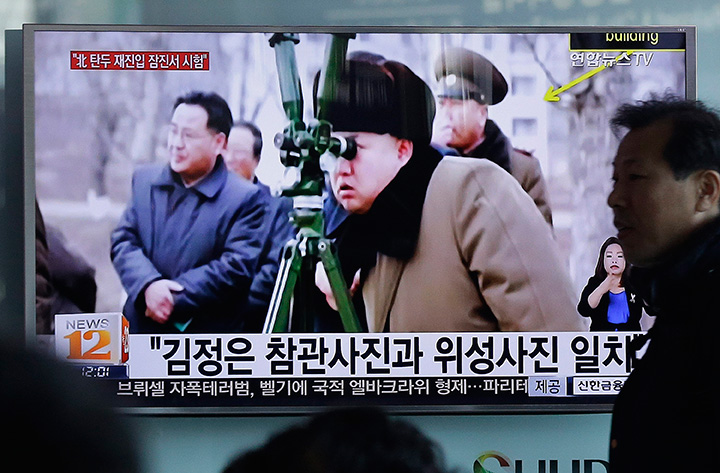SEOUL, Korea, Republic Of – North Korea said Thursday that it had successfully conducted a high-powered, solid-fuel rocket engine test, which if confirmed would be a major step forward in boosting its missile attack capability against South Korea and the United States.

North Korea uses liquid propellants for its main ballistic missiles that target South Korea and U.S. bases in the Asia-Pacific region. A long-range rocket that sent a satellite into orbit last month, whose militarized version can theoretically reach the U.S. mainland, also uses liquid fuel.
Such missiles need to be fueled before they are launched, so it is relatively difficult to use them on short notice. The use of solid propellants, already loaded inside missiles, reduces launch preparation time and increases the mobility of the weapons, making it harder to detect signs before they are launched.
READ MORE: North Korea fires 5 more short-range projectiles into sea
The North’s state media said that leader Kim Jong Un expressed delight after observing the successful testing of a “large-output solid fuel rocket engine,” which made an “earth-shaking” sound as it spit out a large beam of fire.
Kim said that the test will enhance a missile capability that will “mercilessly” strike enemies, an apparent reference to South Korea and the United States.
It is not possible to independently confirm the North’s statement or other high-profile announcements from the secretive, tightly controlled country.
South Korea’s Defence Ministry said Thursday it needs to analyze the statement.
The North’s test appears intended to use solid propellants for missiles with a range of 400-500 kilometres (250-310 miles) that can place entire South Korea in its striking range, and Pyongyang will likely try to do the same on medium- and long-range missiles, according to analyst Chae Yeon-seok at South Korea’s state-run Korea Aerospace Research Institute. Chae said the North already uses solid propellants for some short-range missiles.
READ MORE: North Korea missile launch spurs U.S. to request meeting with United Nations
In recent weeks, North Korea has launched missiles and other weapons into the sea and escalated threats of attacks in response to ongoing annual South Korea-U.S. military drills that it views as an invasion rehearsal. The drills are the biggest, and come after North Korea conducted its fifth nuclear test and launched a long-range rocket earlier this year.
South Korea’s president ordered a heightened security posture on Thursday, a day after North Korea threatened to launch artillery bombardment on her presidential palace.
In an apparent effort to prove its claims of boosted nuclear capability, North Korea has also disclosed purported mock-up of a nuclear warhead and claimed to have developed a re-entry vehicle for a missile that is needed to return warhead to the atmosphere from space so it could hit its intended target.
The re-entry vehicle is considered one of the last major technologies North Korea must master to develop long-range missiles equipped with nuclear weapons capable of reaching the U.S. mainland.
—
Associated Press writer Kim Tong-hyung contributed to this report.



Comments